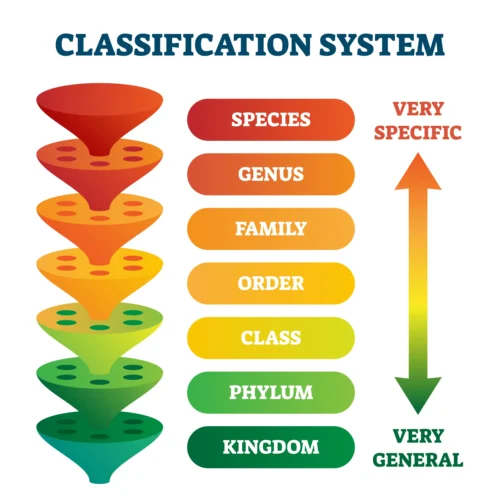Classification

Table of Contents
What is Classification?
Classification refers to the systematic arrangement of organisms into hierarchical groups or categories based on shared characteristics, evolutionary relationships, and genetic similarities.
The primary purpose of classification is to organize the vast diversity of living organisms into a logical and comprehensible framework, allowing scientists to study, communicate, and understand the relationships between different species.
Classification in Biology
Taxonomy
Classification is a key component of taxonomy, the branch of biology that deals with the naming, identification, and categorization of living organisms.
Taxonomists use various criteria, including morphological features, genetic information, ecological characteristics, and evolutionary relationships, to classify organisms.
Taxonomic Hierarchy
Organisms are grouped into a hierarchical system of categories, ranging from broad to specific. The standard taxonomic hierarchy includes domains, kingdoms, phyla, classes, orders, families, genera, and species. The hierarchy allows for a systematic and organized way of classifying organisms based on their similarities and evolutionary relationships.
Binomial Nomenclature
The scientific naming of organisms is an integral part of classification. It follows the binomial nomenclature system introduced by Carl Linnaeus. Each species is given a two-part name (genus + species), ensuring clarity and universality in communication.
Evolutionary Relationships
Modern classification often reflects the evolutionary relationships among organisms. Phylogenetics, a field within taxonomy, uses genetic and molecular data to construct evolutionary trees (phylogenetic trees) that depict the relationships between species.
Domains and Kingdoms
- The highest taxonomic categories include domains (e.g., Bacteria, Archaea, Eukarya) and kingdoms (e.g., Animalia, Plantae, Fungi, Protista).
- These broad categories help categorize organisms based on fundamental differences in cellular structure and organization.
Related Links
Taxonomy
Organisms
Kingdoms
Phylogentics